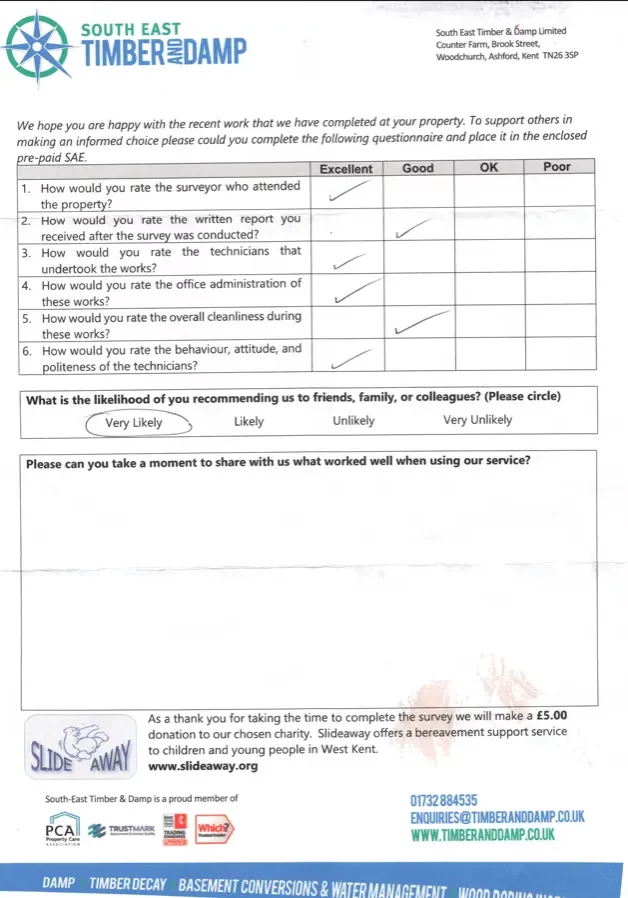Book your survey today!
Timber Treatment In Kent
Timber treatment is vital to protect the wood that supports your building from dampness and all that comes with it.
Timber damage can result from dry rot, wet rot, or woodworm, all of which impact the structural integrity of your timber.
While proper protection can prevent these attacks, sometimes remedial work is required to solve the problem.
South East Timber and Damp have a wealth of experience in wood treatment across our team that can prevent further decay and support the integrity of the building.
Timber Treatment Strategies
We will fix any issue you are facing with the timber in your house. However, we will only start work once we have correctly assessed the problem via a survey.
The issue might be superficial and require a DIY solution, which we will be more than happy to advise on. However, if we find a more pressing issue, we will lay out a timber treatment plan to solve the problem and, more importantly, prevent it from returning.


Dry Rot
Dry rot is one of the main issues that affect timber. Dry rot results from a fungal infection from dry rot spores that land on wood. They require oxygen, moisture and energy, which they get from the cellulose in the wood.
This leaves the wood dry, brittle, and vulnerable if a professional does not address the problem.
Find out more here.
Wet Rot
Wet rot is similar to Dry rot in that it is the result of fungi that attack the fabric of the wood itself, affecting the integrity of the building.
Wet rot flourishes in damp conditions, leaving the wood soft and spongy instead of reducing it to a dusty, flaky mess, as with dry rot.
The concern with wet rot is the speed with which it can spread, which is a crucial differentiator from dry rot. The spores produced float in the atmosphere, looking for the next wet timber surface to attack.
Find out more here.


Woodworm
Woodworm is the third major issue that requires timber treatment. The beetles will lay their eggs in any possible space within a wooden surface, including your floorboards, beams and furniture.
Once they hatch into larvae, they will burrow into the wood and remain there for up to five years, devouring the nutrients and leaving frass in their wake.
Woodworm is hard to spot, but it's essential to get professional help as soon as possible to solve the problem.
Find out about Woodworm here.
Our Customer Reviews

Need help? Book a survey at a time to suit your schedule
Our mission is to give you the peace of mind you deserve when it comes to waterproofing your house or business. Commission a survey from our team to assess your situation professionally.






